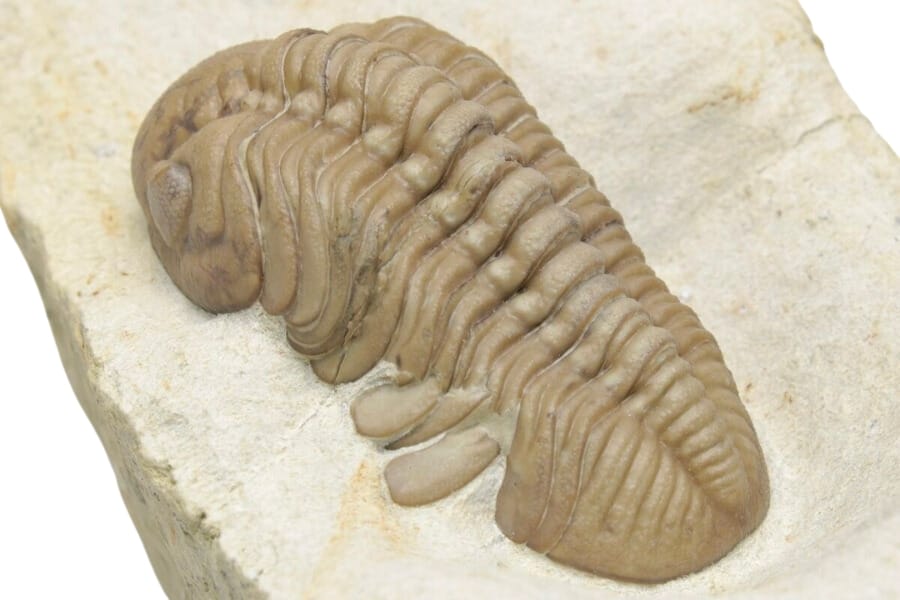As remarkable remnants of prehistoric life, fossils provide us with a glimpse into the past. If you want to learn from these natural wonders, Oklahoma is a fantastic place to hunt for fossils. But locating them here doesn’t come without challenges.
One of the difficulties in finding fossils in Oklahoma is that many of them are hidden beneath layers of rock or buried deep underground. Without proper knowledge of the geological formations and the right tools, it can be a daunting task.
But don’t worry because we’re here to share some guaranteed spots to find Oklahoma fossils. Among these places are the Arbuckle Anticline, Lake Texoma, Canadian River, Fort Gibson Lake, and Black Bear Creek.
We’ll also briefly talk about the types of fossils you can expect to find here so you can do your research in advance and not take the risk of walking past one without recognizing it. Let’s begin!
The Fossils Of Oklahoma You Can Find
Oklahoma is rich in great rockhounding sites, but if you want to focus your hunting on fossils, there are specific areas only where you can find them.
Before we go into that, let’s talk about the different common and rare Oklahoma fossils that you might encounter here.
- The extensive local experience and understanding of our team
- Input from multiple local fossil hunters and fossil groups
- The accessibility of the various locations
- Safety and potential hazards when collecting
- Private and public locations
- A desire to include locations for both experienced fossil lovers and those who are just starting out
Using these weights we think we’ve put together the best list out there for those who love finding great new fossils for our collections!
Common Oklahoma Fossils
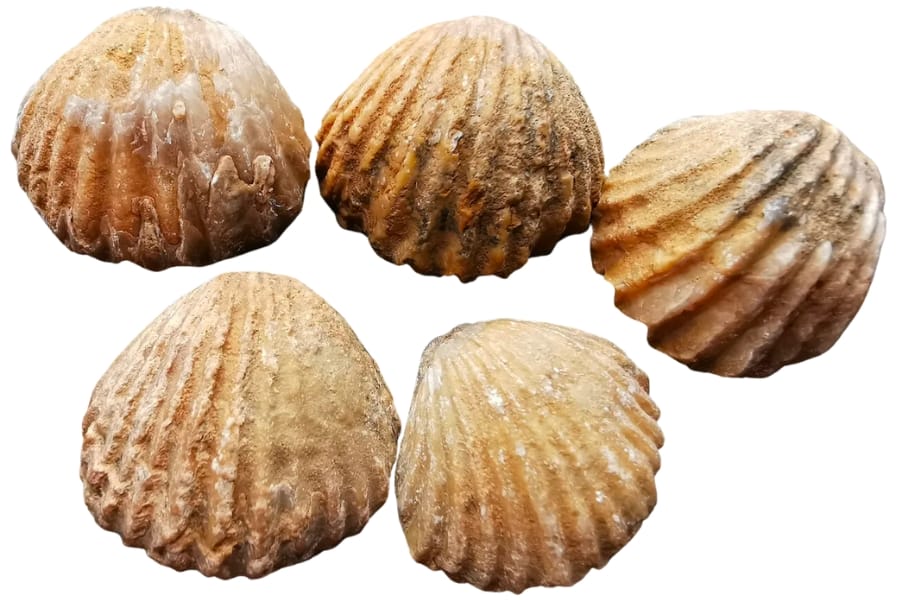
Here are some of the most common Oklahoma fossils that you have a high chance of finding during your exploration:
- Ammonites
- Brachiopods
- Bryozoan
- Corals
- Crinoids
- Gastropods
- Graptolites
- Trilobites
Oklahoma State Fossil – Saurophaganax maximus
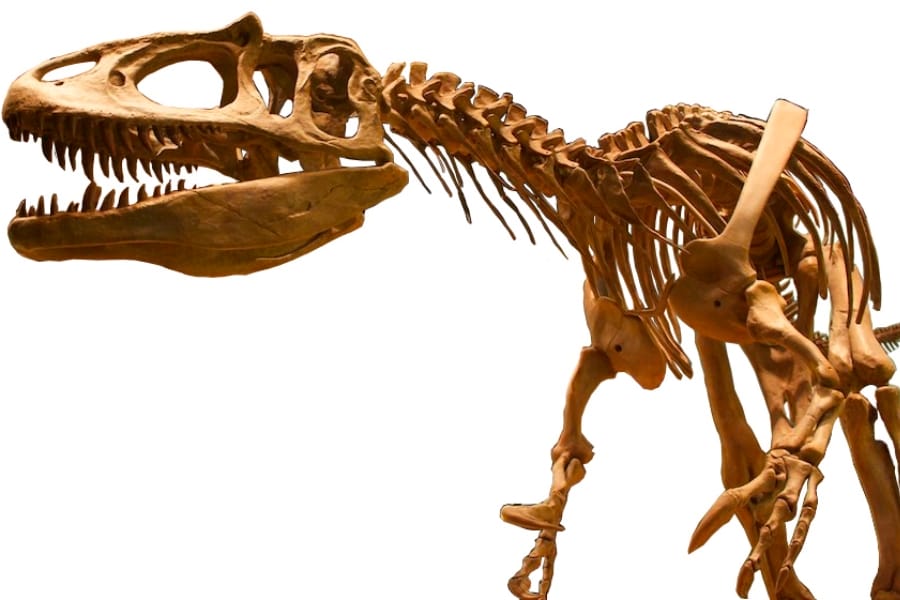
Saurophaganax maximus is a dinosaur that roamed the land around 150 million years ago during the Late Jurassic period. It belonged to the theropod group, which included some of the most fearsome predators of their time.
Saurophaganax has an estimated length of up to 40 feet and a weight of around 4 tons. What makes it particularly special is its status as one of the largest theropods ever discovered, rivaling even the famous Tyrannosaurus rex.
It has a remarkable set of serrated teeth, which it used to slice through the flesh of its prey. These teeth were designed for efficient hunting and allowed Saurophaganax to take down large herbivorous dinosaurs. It had powerful jaws and sharp claws, making it a formidable predator in the Late Jurassic ecosystem.
Rare Oklahoma Fossils
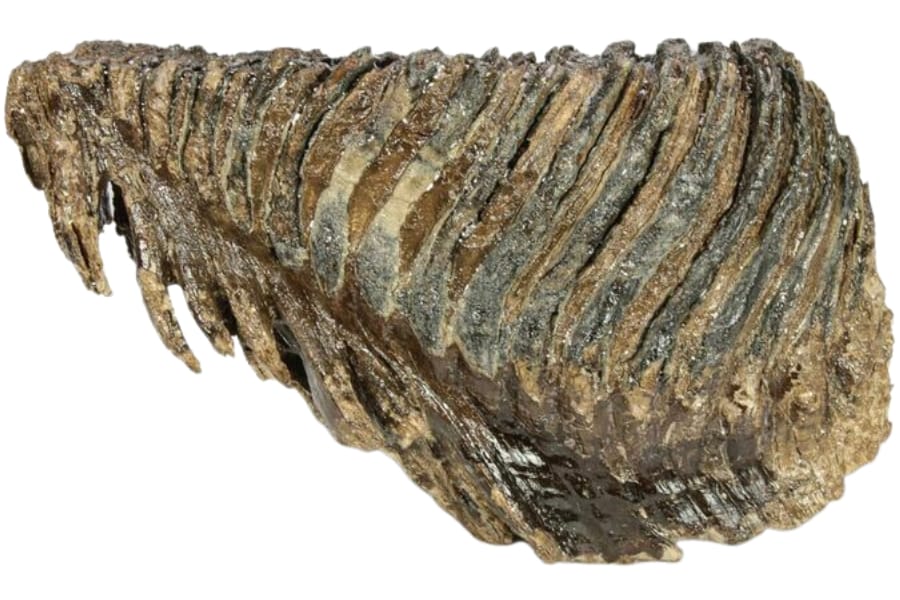
Aside from common finds, you can also discover rare Oklahoma fossils, although they’ll be challenging to locate. Some of them are:
- Mammoth
- Mastodon tusks
The Best Places To Find Fossils In Oklahoma
Your best chance of finding fossils in Oklahoma is by looking for them in the right place. Below are our top recommended sites to explore and search through for these ancient treasures:
Always Confirm Access and Collection Rules!
Before heading out to any of the locations on our list you need to confirm access requirements and collection rules for both public and private locations directly with the location. We haven’t personally verified every location and the access requirements and collection rules often change without notice.
Many of the locations we mention will not allow collecting but are still great places for those who love to find beautiful rocks and minerals in the wild without keeping them. We also can’t guarantee you will find anything in these locations since they are constantly changing.
Always get updated information directly from the source ahead of time to ensure responsible rockhounding. If you want even more current options it’s always a good idea to contact local rock and mineral clubs and groups
Arbuckle Anticline
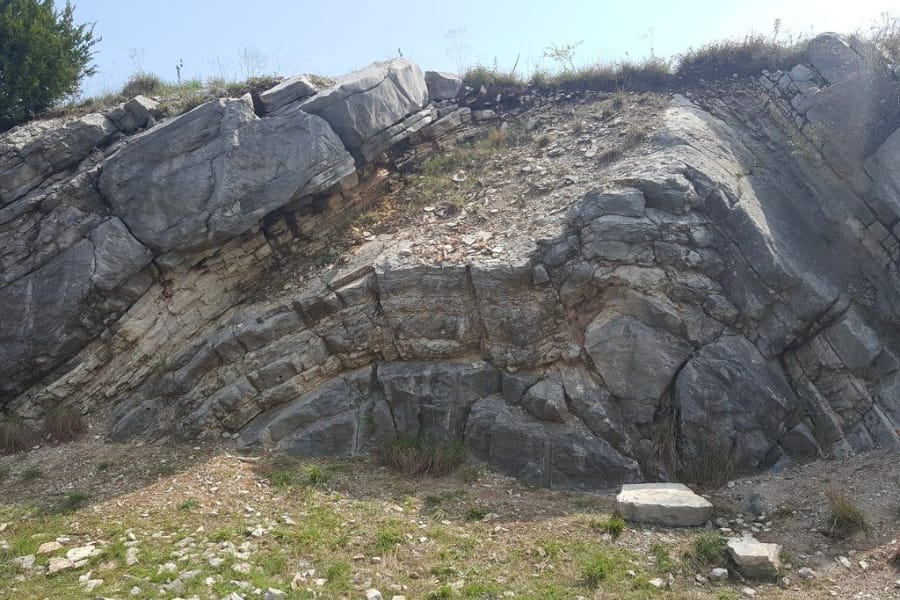
Arbuckle Anticline is a fold in the Earth’s crust that stretches across southern Oklahoma, creating a series of exposed rock layers that date back to the late Paleozoic era, around 300 to 500 million years ago.
What makes this place particularly enticing for fossil hunters is its abundance of well-preserved marine fossils, providing a window into the ancient seas that once covered this region.
Since it spans a large area, the Arbuckle Anticline is relatively easy to reach. This accessibility makes it a great destination for both seasoned fossil hunters and beginners.
Where and what fossils to find in Arbuckle Anticline
Interestingly, Arbuckle Anticline’s Bromide Formation is reported to contain more than eighty brachiopod genera.
The rocks exposed here also contain a rich assortment of other fossils, including bryozoans, corals, graptolites, mollusks, and trilobites. These fossils are often found in limestone and shale layers, which are prevalent throughout the area.
If you want REAL results finding incredible rocks and minerals you need one of these 👇👇👇
Finding the coolest rocks in isn’t luck, it's knowing what to look for. Thousands of your fellow rock hunters are already carrying Rock Chasing field guides. Maybe it's time you joined the community.
Lightweight, mud-proof, and packed with clear photos, it’s become the go-to tool for anyone interested discovering what’s hidden under our red dirt and what they've already found.
Join them, and make your next rockhounding trip actually pay off.
What makes it different:
- 📍 Find and identify 140 incredible crystals, rocks, gemstones, minerals, and geodes across the USA
- 🚙 Field-tested across America's rivers, ranchlands, mountains, and roadcuts
- 📘 Heavy duty laminated pages resist dust, sweat, and water
- 🧠 Zero fluff — just clear visuals and straight-to-the-point info
- ⭐ Rated 4.8★ by real collectors who actually use it in the field
Lake Texoma
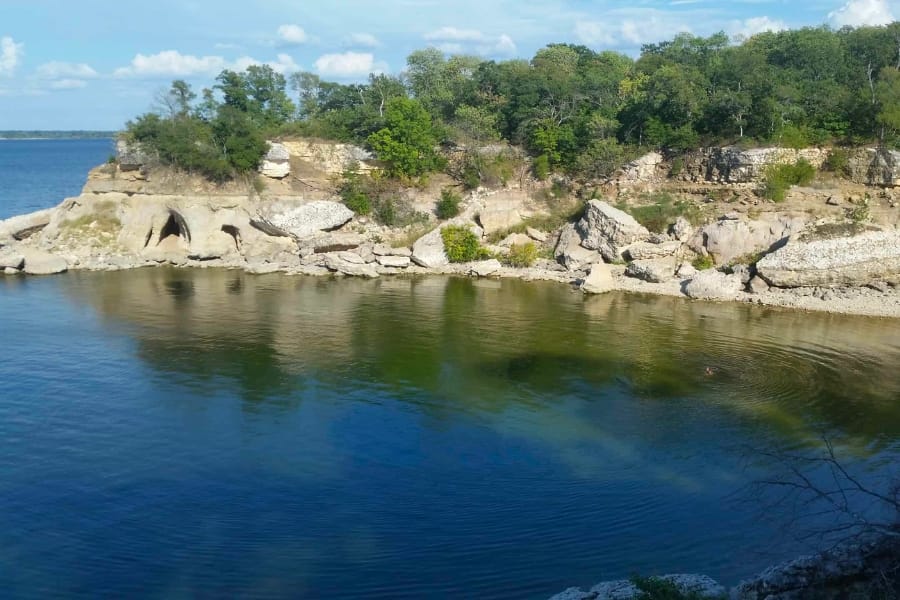
Lake Texoma is not just a popular destination for boating and fishing; it’s also a hidden gem for fossil enthusiasts. This massive reservoir was created by the Denison Dam on the Red River.
Its geologic history made this lake an excellent fossil hunting site. Its surroundings feature rocks from the Lower Cretaceous period, which dates back around 100 million years.
If you want to visit here, Lake Texoma is easily accessible by car from major cities like Dallas, Texas, and Oklahoma City. The lake spans both Oklahoma and Texas, with various access points along its shores, so you can reach it with relative ease.
Where and what fossils to find in Lake Texoma
Keep an eye out for ammonites when you’re here. Exploring the shores of Lake Texoma, especially after a rainstorm, can reveal a bounty of fossils washed up along the water’s edge. You can also try your luck in creek beds and eroded bluffs around the lake.
Canadian River
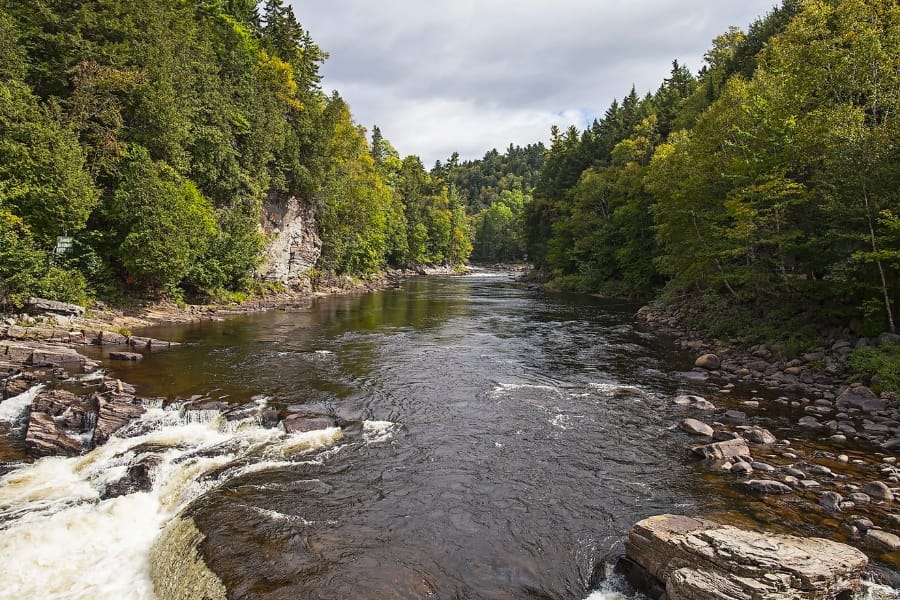
Meandering through the heart of Oklahoma, the Canadian River and its surrounding banks not only offer scenic views but also a unique opportunity to uncover the secrets of prehistoric life in our state.
This river flows through layers of sedimentary rock, some of which date back to the Late Cretaceous period, around 70 to 100 million years ago. Aside from these rocks, exploring its riverbanks and nearby cliffs can also lead to exciting fossil discoveries.
Thanks to the extensive network of accessible locations along its course, getting to the Canadian River is relatively simple. Major highways and roads crisscross the region, ensuring easy access from cities like Oklahoma City and Amarillo, Texas.
Where and what fossils to find in the Canadian River
Explore both sides of the south shore of the Canadian River up to the Canadian County border in Caddo County, where you can find marine fossils, especially silicified corals.
Fort Gibson Lake
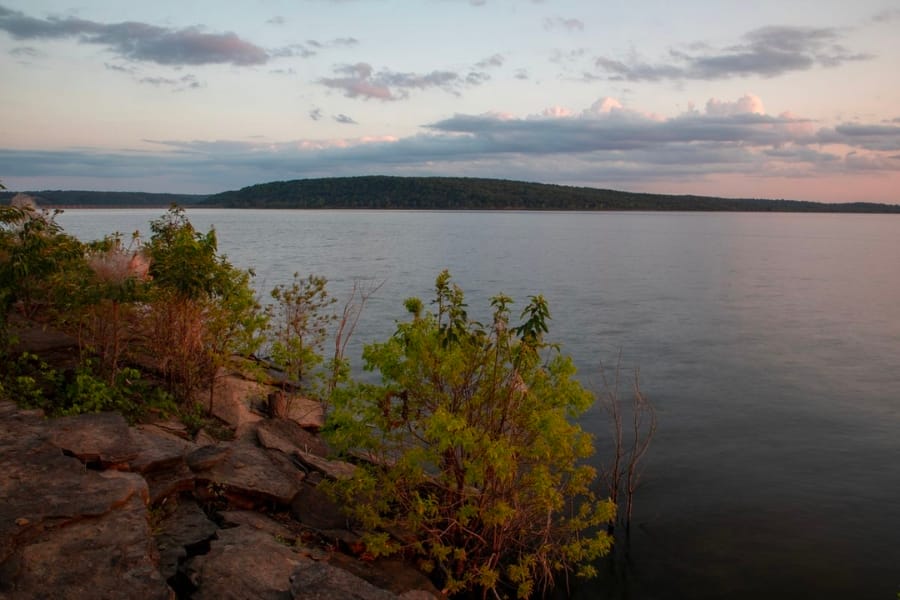
Fort Gibson Lake, nestled in the northeastern part of our state, is formed by the Fort Gibson Dam on the Grand River. What makes it an ideal location for fossil hunting is its geological history.
The area around the lake boasts rocks from the Pennsylvanian and Permian periods, dating back roughly 300 to 300 million years ago. Often, these sedimentary rocks are home to different marine fossils.
Should you plan to go here, it will be a convenient trip. Fort Gibson Lake is easily accessible by car from nearby towns and cities like Muskogee and Tulsa. Its extensive shoreline features various access points.
Where and what fossils to find in the Fort Gibson Lake
If you explore the shores and creek beds around Fort Gibson Lake, especially after a rainstorm or seasonal changes in water levels, you can find fossils of brachiopods, clams, mussels, plants, trilobites, and other marine life. Trace fossils have also been found here.
Black Bear Creek
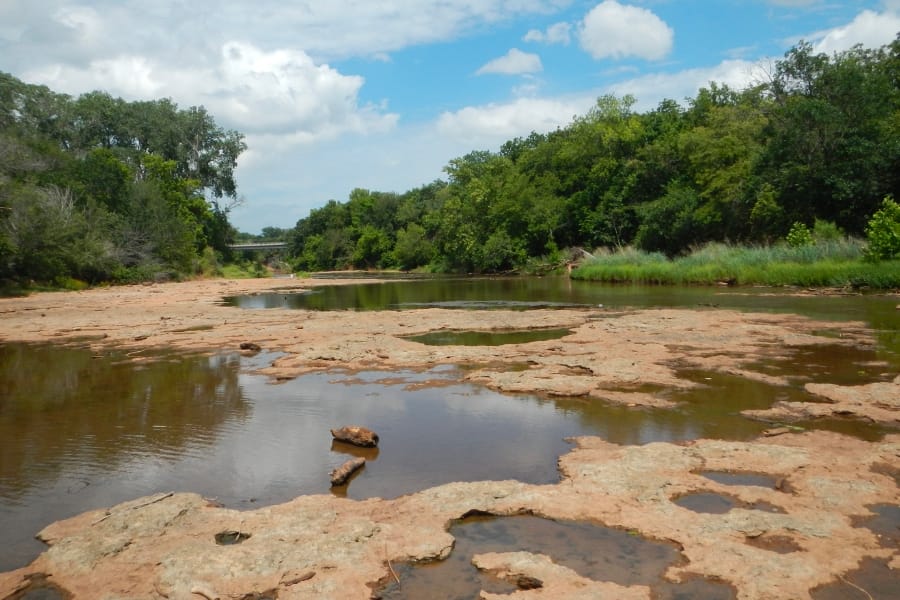
Black Bear Creek is a tranquil waterway that offers a peaceful escape into nature while providing an excellent opportunity to uncover common and rare Oklahoma fossils.
The rocks here date back to the Pennsylvanian and Permian periods, approximately 300 to 300 million years ago. These contain an array of marine fossils. Fossilized shells and imprints of ancient sea creatures are also often embedded in the creek’s exposed limestone and shale layers.
Black Bear Creek flows through several counties in central and eastern Oklahoma, including Okfuskee, Seminole, and Hughes counties. This means you can access this place from points along its course that are easily reached by car.
Where and what fossils to find in the Black Bear Creek
When you explore here, you can find a large number of vertebrate fossils, such as Labyrinthodonts and Trimerorhachis. You can also find amphibians, fish, reptiles, and lungfish burrows with Gnathorhiza specimens.
Other Top Places To Find Oklahoma Fossils By Region
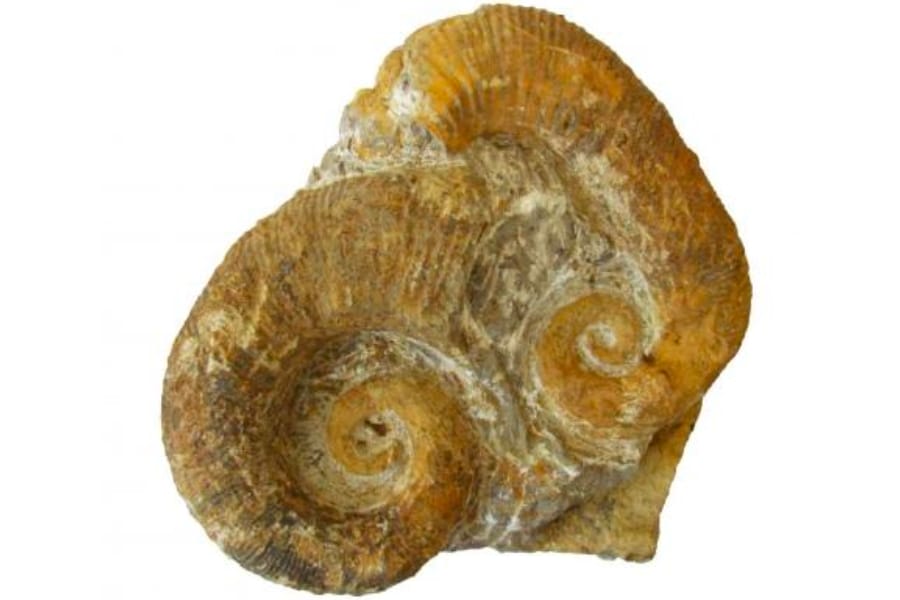
If you’re curious about other guaranteed spots to find fossils in Oklahoma, we’ve listed more options for you below, including what kinds of fossils you’ll find in each of them.
| Location | Fossils |
| Rock Crossing in Criner Hills, Carter County | Diverse trilobites |
| Tindel Company Gravel Pit in Caddo County | Marine fossils, especially silicified corals |
| Dolese County Gravel Pit in Canadian County | Marine fossils |
| Hinkle Company Quarry in Canadian County | Marine fossils |
| Cottonwood Canyon to its mouth at the Cimarron River in Cimarron County | Flora fossils |
| Coal mines in Mexahoma area in Cimarron County | Flora fossils |
| Abandoned quarry in Clarita, Coal County | Crinoids |
| Fissure fill in Dolese Quarry in Comanche County | Captorhinus, Doleserpeton |
| Old road between Fort Auger and Fort Sill in Cotton County | Archeria, Captorhinus, Diadectes, Dimetrodon, Diplocaulus, Edaphosaurus, Eryops, Ophiacodon, Trimerorhachis, Zatrachys |
| Dolese Brothers Quarry in Cotton County | Cardiocephalus |
| Area road cuts in Hillsdale, Garfield County | Mammoth |
| Three gravel pits in Tuttle area, Grady County | Marine fossils |
| Permian exposures along a ridge in Tabler, Grady County | Vertebrate fossils |
| Wide belt between Holdenville and Spaulding in Hughes County | Mesolobus, Marginifera |
| Road intersection just east of Blaine County line in Kingfisher County | Bones and teeth of reptiles and amphibians |
| Omega quarry in Kingfisher County | Caseids, Cotylorhynchus, Angelosaurus, Actinopterygian fish |
| Asphalt layer in Sulphur, Murray County | Gastropods, Nautiloids |
| Greenleaf Lake Spillway in Muskogee County | Crinoids, Invertebrate fossils |
| Bed of Verdigris River at Okay, Muskogee County | Myalina |
| Midco insect beds in Ceres, Noble County | Glaphyrophlebia, Probnis, Scorpion flies, Dragonflies |
| Limestone near spillway of Lake Okmulgee in Okmulgee County | Limipecten |
| Baroum Ranch in Osage County | Clavicosta, Streblochondria, Streblopteria |
| North of Lawrence area in Pontotoc County | Ivory, Mastodon tusk fragments |
| Along Jackfork Creek in Pontotoc County | Pudoproetus |
| Area quarries and outcrops in Marble City, Sequoyah County | Brachiopods, Invertebrate fossils |
| West of US183 on Manitou Road in Tillman County | Amphibia Eryops, Trimerorhachis, Dimetrodon, Orodus |
| Garnett Quarry in Tulsa County | Annuliconcha |
| Dewey Cement Co Quarry in Tulsa County | Actinolepis, Agassizodus, Listracanthus, Petrodus |
| At “The Mound” in Bartlesville, Washington County | Promytilus |
Common Questions About Fossil Hunting In Oklahoma
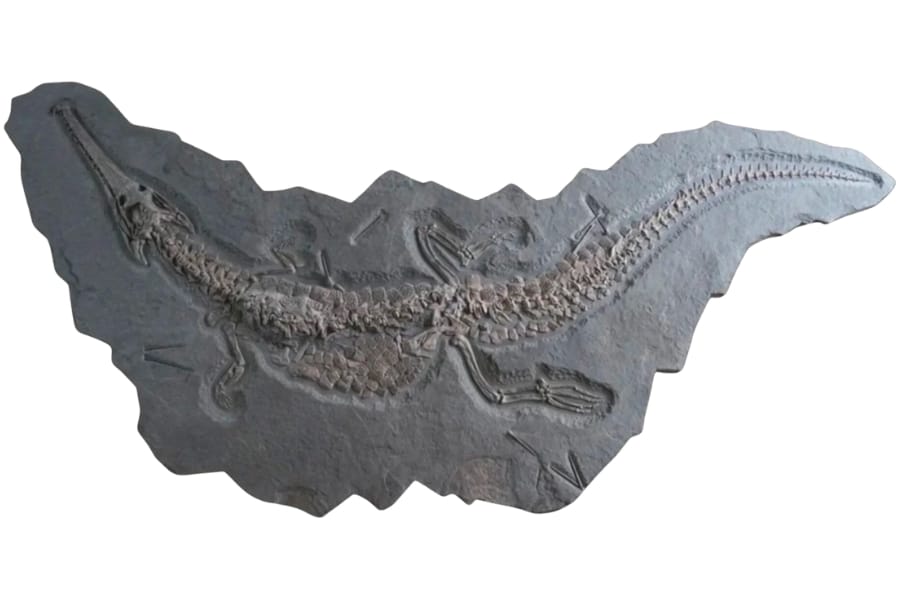
Aside from knowing the guaranteed fossil-hunting spots here, it also helps to know the answers to some of the most common questions when it comes to finding Oklahoma fossils, such as:
Can you find megalodon teeth or shark teeth in Oklahoma?
While it’s extremely rare to find megalodon teeth or large shark teeth in Oklahoma, it’s not entirely impossible. The reason for this rarity is our geological history.
Our state was once covered by ancient seas, but these seas were mostly shallow and inhabited by smaller marine creatures, making the discovery of megalodon teeth or large shark teeth uncommon.
Megalodon teeth are typically associated with the Cenozoic era, which spans from about 23 million to 2.6 million years ago. However, Oklahoma’s fossil record primarily consists of rocks from the Paleozoic and Mesozoic eras, which are much older than the Cenozoic era.
Is it illegal to collect fossils in Oklahoma?
Collecting fossils in Oklahoma is generally legal on private property with the landowner’s permission.
When collecting fossils on public lands or in state parks, you should adhere to any specific rules and regulations governing those areas, which may include permit requirements or restrictions.
Additionally, collecting fossils for commercial purposes may have its own set of regulations and permitting requirements. For more information, you may visit the Oklahoma Department of Wildlife Conservation website.
Can you find dinosaur bones in Oklahoma?
Yes, you can find dinosaur bones in Oklahoma, although they are relatively rare compared to other states. Our state has yielded fossils from several dinosaur species, and there have been notable discoveries over the years.
One of the significant dinosaur finds here is our state fossil, the Saurophaganax maximus. Its fossil remains were discovered in the Black Mesa area in the western part of our state.
Another noteworthy discovery was the Tenontosaurus, a plant-eating dinosaur from the Early Cretaceous period. Its fossils have been found in various parts of Oklahoma, including the Antlers Formation.
Our Favorite Places To Buy Fossils In Oklahoma

Another great way to find fossils from Oklahoma is to visit our trusted local shops here. Who knows, you might like a specimen so much that you’d want to buy it for your home.
Below are some of the local stores you can visit:
- Andaluz Artisan – 1922 N Eastern Ave, Moore, OK 73160
- Chalk Hills Fossils, LLC – 2001 S Broadway Ave, Moore, OK 73160
- Good Earth Rocks Gallery – 824 N Broadway Ave, Oklahoma City, OK 73102
- Rare Earth Mercantile – 12316 Val Verde Drive, Oklahoma City, OK 73142
- Red Stone Fossils – 3000 S Sooner Rd, Oklahoma City, OK 73165

